By James Love
Last year I rode a KONA Process 111 and enjoyed it very much – it proved to be a superb performer in technical singletrack that suited my local trails well. A strong chassis, sorted geometry, controlled suspension and 29er wheels delivered a very capable and versatile ride that worked well for me as an all-rounder in a range of situations.

I’m very lucky where I live – there’s a super varied spectrum terrain and topography. I enjoy rallying the steep valley sides and more longer undulating moorland loops. I’ve enjoyed riding down the Tweedlove EWS stages and been ‘tween the tapes with a number plate on for a couple of PMBA rounds at Grizedale and Lee Quarry/Cockhill. This is typical fare for me and for the last few years I’ve exclusively ridden 29ers of the lower and slacker, 120mm or thereabouts travel type. It’s a type of bike that has become a well sorted option, capable of riding demanding terrain and going the distance.
Many manufacturers offer a number of trail bike options – at one end of the spectrum you have the short(er) travel 29ers, at the other the long(er) travel 650b bikes. Horses for courses, surfboards for waves isn’t it? The best bike for the job is the one you are riding, but especially if it aligns with where you are riding it and how you wish to ride.
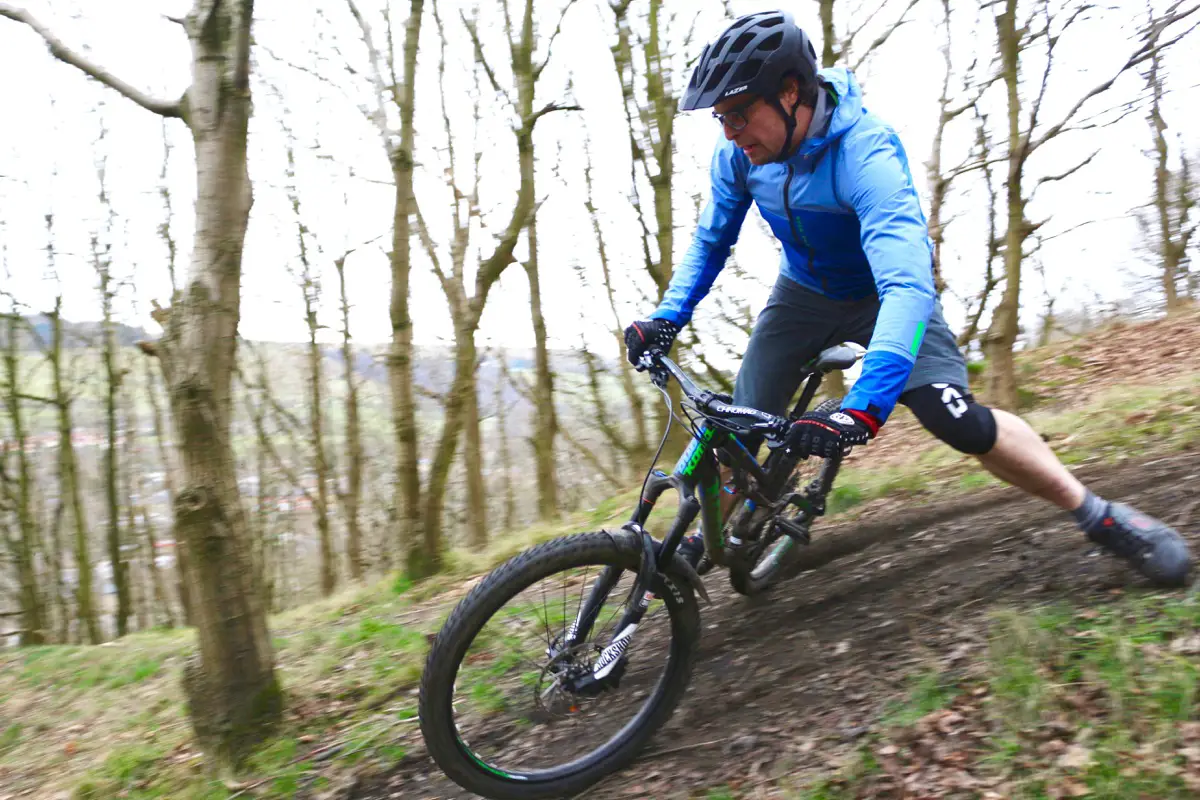
I wasn’t in a hurry to change being pretty happy with the combination of just-enough travel and 29er wheels – mo’ grip, better obstacle rollover/gap fill + a nimble + fast technical singletrack + short travel pop and go! But while these are a sweet ride in all kinds of places, when things get choppy they can get uncomfortable, and this acts as an inbuilt speed check… it does make you wonder “what does that one with more travel feel like?”
The Process line of mountainbikes are aimed at trail, enduro & gravity, with different wheel sizes and travel. In the videos that Kona have put out for the Process bikes, the 111, 134 and 153 models are all ridden on the same trails; the intent is the same – you can take your pick. This time round I went with more travel and smaller wheels.
From first ride there was a familiar layout and welcome feel – reach & stack compare throughout the size range. I’m 6′ 1 and a bit, and I’m happy to ride an XL Process: I am a fan of longer bikes. The chainstay on the 153 sits at 425mm, and the wheelbase for my XL is 1217mm; it weighs in at 30.9lbs.
Within the first few pedal strokes I was happy to get the same feeling of solidity and positive drive that I experienced with the 111. And then I fell off. It was the first ride and wet – very wet. I slipped and slid through a turn, lost the front wheel and slapped the ground with my chest…oooof! When I could breathe again a few weeks later I tried again. And fell off again. Losing grip mid corner (if there was any in the slop) and removing the rear derailleur with a rock.
It is purported that 29ers offer more grip and require a different approach to riding – and I agree on both counts. The larger contact patch and different rotational forces support this thinking and required a little learning. But I adjusted to the nuances quickly enough. Third time lucky, and it’s been nothing but good times since then. Fast times, too – the 153 is an absolute charger that is up for attack, and it loves a good ragging.
Designer Chris Mandell and the team at Kona got the Process right the first time round – geometry, layout and the way in which they are put together. For the 2016 model year it was happily a case of it ain’t broke, don’t fix it…with minor tweaks to seattube and seattube gussett only. The rest remains the same – muscular aluminium frame, sturdy and low slung front end linked to solid swingarm with big bearings. It’s strong, dependable and can be pushed hard without complaint.
The component specification is considered and very much fit for purpose. You get SRAM GX 1×11 gears for go and Shimano Deore brakes for stop. Both are the more basic offerings from respective companies and they’re not the lightest – but you get good functionality and top value for money. Both the brakes and drivetrain have proven to be simple, strong and reliable performers. The brakes are plenty powerful with a 203mm front rotor and 180mm rear rotor able to scrub or stop with good lever-feel and a high level of control.
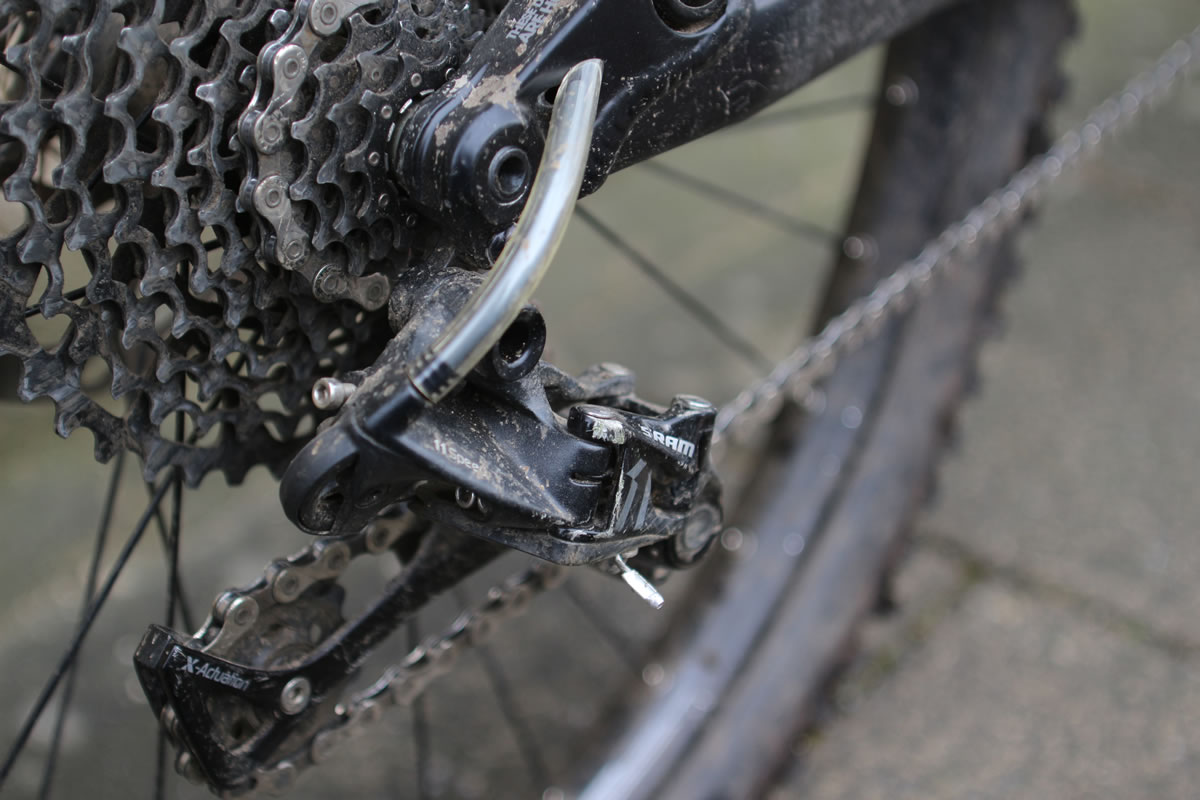
The GX drivetrain hasn’t missed a beat despite taking a beating. A 32t front ring matches to a 10-42t cassette gives enough range for spinning up most hills, cruising along and sprinting for more speed thrills. It’s quiet and with good chain retention too. You can always change the overall gear range by switching the front chainring to something smaller or larger to suit you and the hills you are riding. There is the option to fit a chain device to the iscg mounts on the frame for added chain security and peace of mind should you need/wish to.
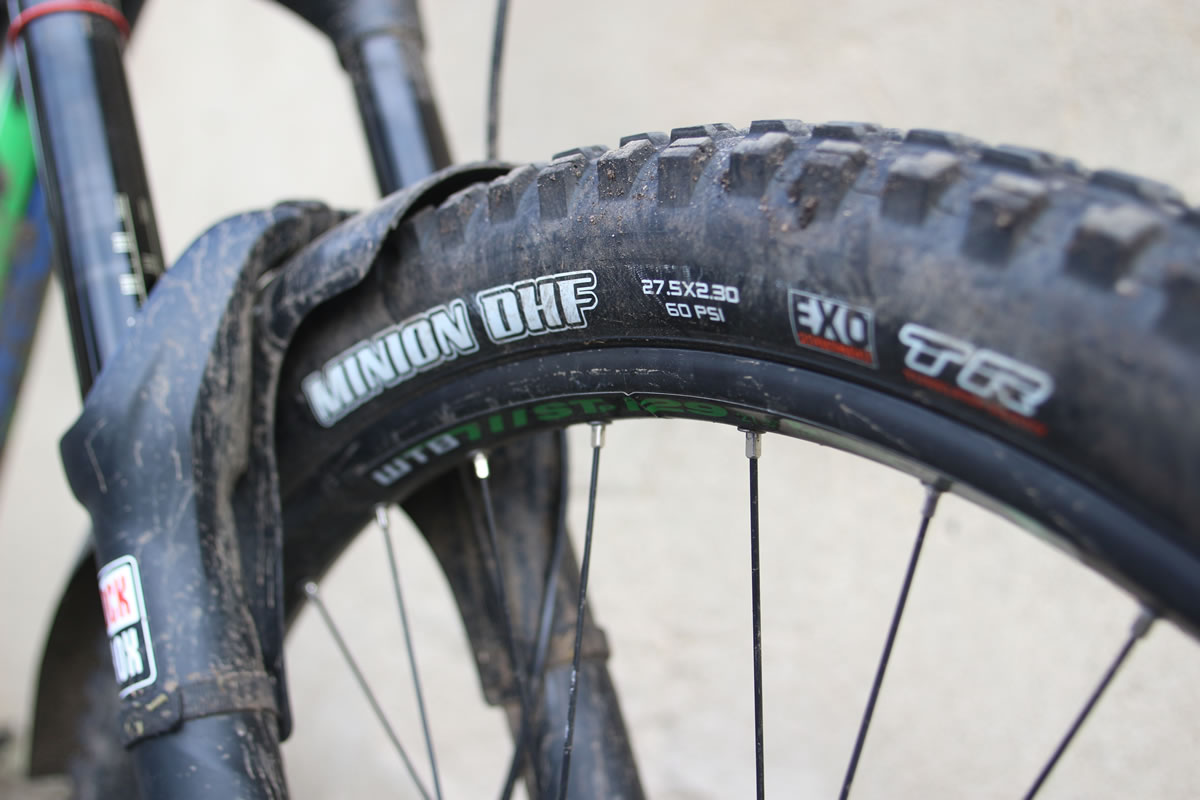
MAXXIS Minion DHF EXO tyres front and rear are long proven. They’re very good all round tyres working well in a multitude of conditions and happily they’re well supported by wide (29mm internal) WTB rims. This really does have a positive effect on traction and cornering grip – the tyres resist roll and can be pushed harder without deformation or the dreaded flop that can be experienced with narrower rims.
You get a Lev Integra dropper seatpost dropper post from KS with really nice operation with the southpaw lever – this locates on the left hand side of the handlebar and nicely sits below and out of the way pretty much matching the position of the SRAM shifter on the right.
This is a bike that looks right and feels right with modern aggressive geometry and a low slung top tube that’s out of the way. The lengths and angles puts you in a good position wether seated or standing. It’s roomy, comfortable and composed with easy to find balance point the front end can be lifted intuitively for up and over moves and pushed through corners.
It’s on the steeper end for a 160mm travel bike, with a head angle of 66.5deg (unsagged), a low bottom bracket, a shorter than most rear end and a long front centre and overall wheelbase. All this and the way in which the suspension behaves comes together to give a great blend of agility and stability. It’s happy popping over things & bombing through things. Float or flow are easy to access at your fickle whims.
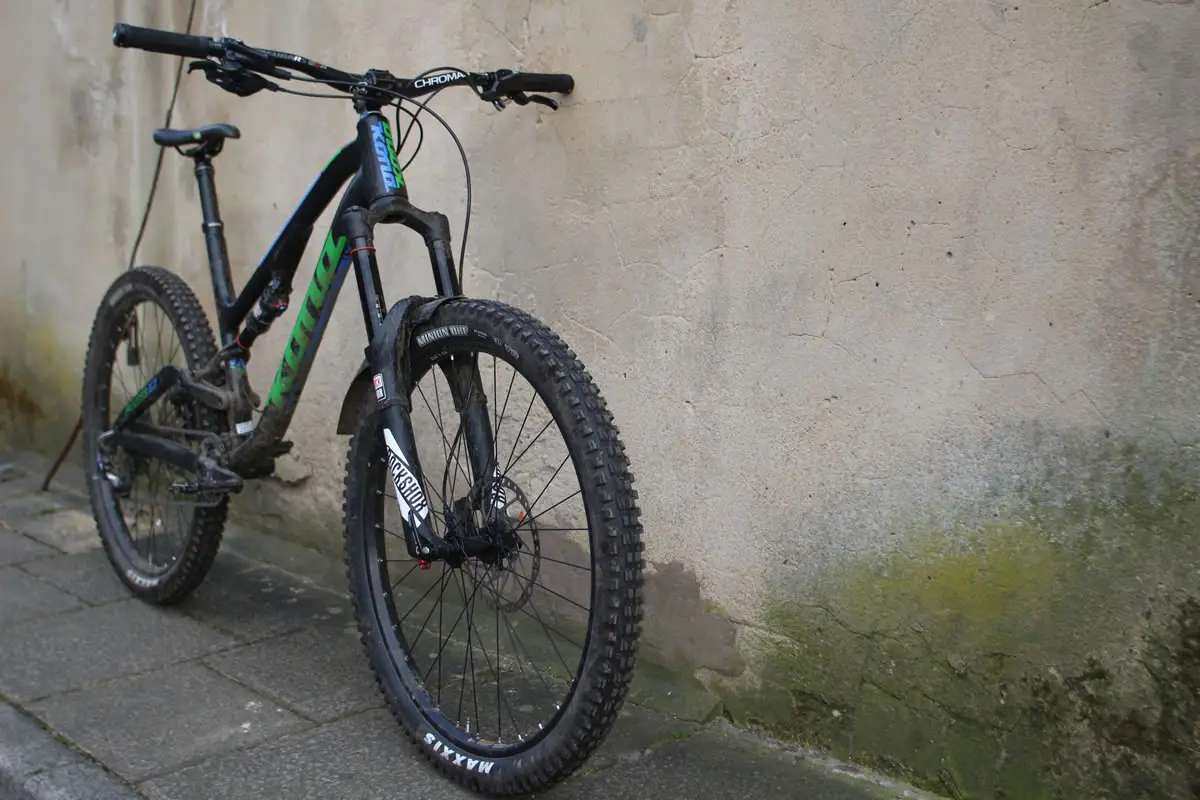
Point it down and It does like going fast, with an appetite for rough and messy terrain. That’s what it is designed and built for, but at the same time it can be ridden in a more laidback manner without feeling lifeless. It’s well mannered and has a lively, spirited ride.
For the amount of travel the 153 is a good climber with an up-over-the-pedals riding position and that roomy cockpit. Power transfer feels nice and positive and overall the bike has a feel of riding lighter than it is, and it makes good progress spinning up sitting or standing for harder efforts. I’ve not felt the need to adjust compression of the Monarch RT shock for anything other than longer road climbs.
So it’s a balanced and confident ride with suspension that offers support and grip. The 153 has easy going manners and a fine blend of play and confidence in rough terrain which some longer travel bikes simply don’t have. It’s very good up, along and down. It’s a very good bike for more difficult terrain with a sorted stock build. It’s special in that it has the ability to get up to serious speed and be composed and stable in rough terrain and be playful, well mannered and efficient. It has the travel that can deal with greater amplitude, greater frequency hits without feeling like you are dragging too much bike around. It’s ideal for bigger days out and short sharp steep messing around with/without a number plate and goggles.

Longer term
There has been some workshop time since I received the bike – early on some play developed in the rear wheel. The rear wheel bearings have needed adjusting a couple of times after the locknut loosened off. This issue stopped once I cleaned the threads of the axle and locknut and added locktite. And after removing the rear derailleur with a cobble sett when I went off piste, I replaced the cable, broken hanger and re-fitted the (amazingly undamaged) derailleur with no problems.
Out of the box the Rock Shox PIKE RC solo fork has no tokens and travel is linear. To make for a more progressive action I fitted 2 tokens – it’s a simple job that takes less than 10 minutes – for a more supple early stroke with increased support towards the end. The bike rides better for it.
The WTB STp i29 rims have a 29mm internal width, support the tyres well and are factory fitted with tubeless tape, and the MAXXIS tyres have a tubeless ready casing, so I added some sealant and went tubeless. Very much recommended; I saved 0.84lbs, gained increased resistance to punctures, and got lower pressures, more grip and improved feel. Thumbs up to Kona for making it an easy thing to do and supplying tubeless ready components.
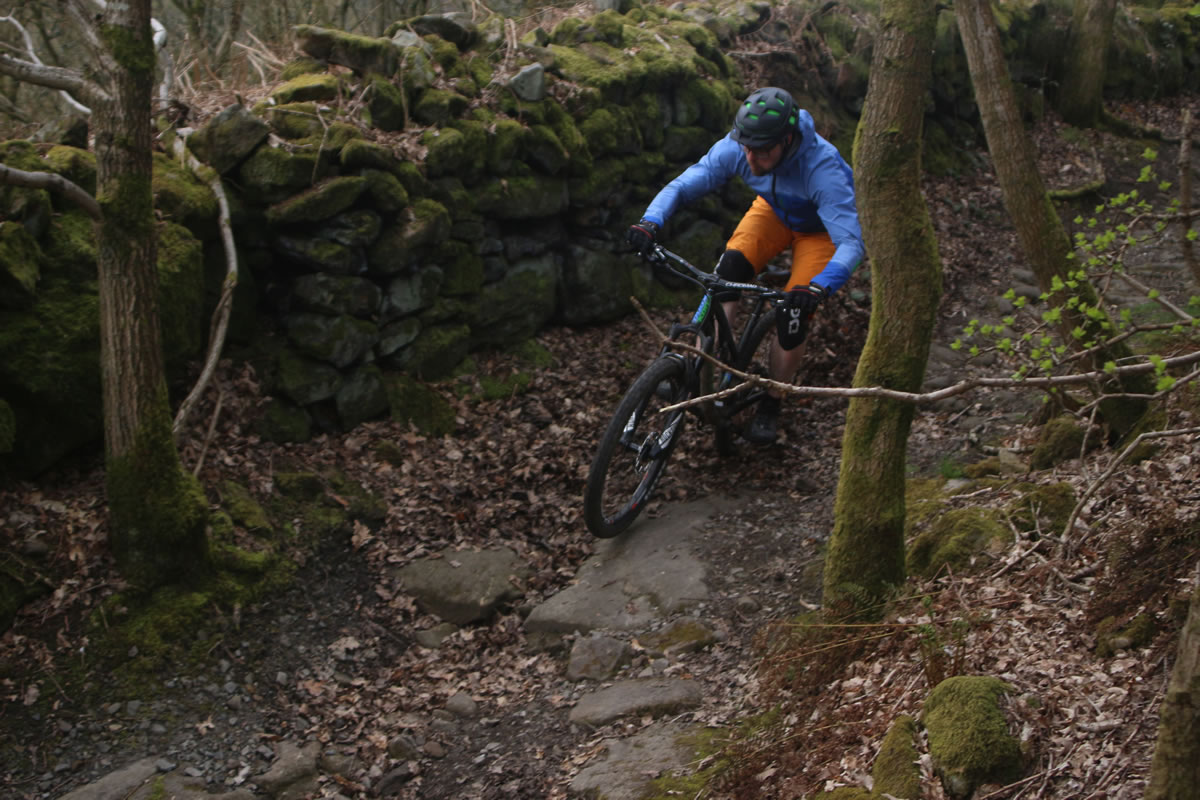
Any changes?
The stock stem and handlebar are perfectly good pieces of kit being the right shape, size and not overly heavy. But I’ve fitted a longterm test Chromag ranger stem and Fubar OSX handlebars of the same proportions, and I have recently fitted a ridiculously fancy pair of Stans Bravo wheels which has dropped overall weight by a pound and changed the dynamic feel of the bike.
What now? More riding. Some longer descents in the uk – Trips to Scotland both to the Tweed Valley and Fort William. A Lakes overnighter is slated, as is plenty of local razzing and a numberboard for a between the tapes enduro or two.
Watch this space…
Kona Process: £2999 – from: konaworld.com






